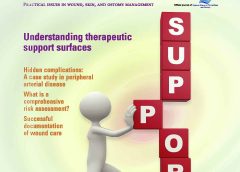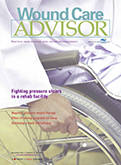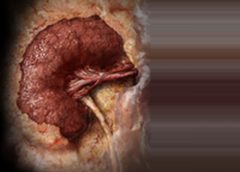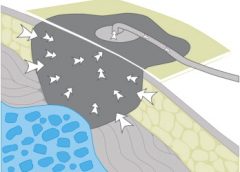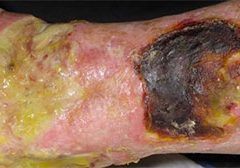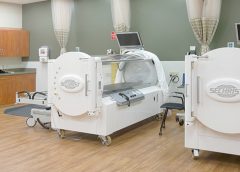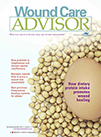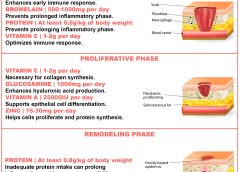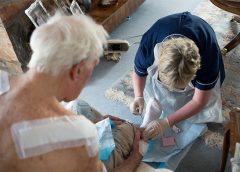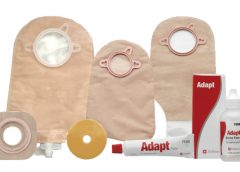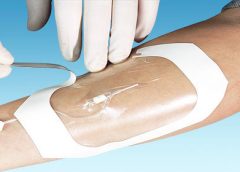Understanding therapeutic support surfaces
Pressure-ulcer prevention and management guidelines recommend support-surface therapy to help prevent and treat pressure ulcers. Support surfaces include pads, mattresses, and cushions that redistribute pressure. Full cushions and cushion pads are considered therapeutic support surfaces if used to redistribute a patient’s pressure in a chair or wheelchair.
The National Pressure Ulcer Advisory Panel (NPUAP) defines support surfaces as “specialized devices for pressure redistribution designed for the management of tissue loads, microclimate, and/or other therapeutic functions.” These surfaces address the mechanical forces associated with skin and tissue injury, such as pressure, shear, friction, and excess moisture and heat. (See Clearing up the confusion.)
Clinical Notes: Pressure Injury Prevention, Diabetes, LIV
Incidence density best measure of pressure-ulcer prevention program According to the National Pressure Ulcer Advisory Panel (NPUAP), incidence density is the best quality measure of pressure-ulcer prevention programs. Pressure-ulcer incidence density is calculated by dividing the number of inpatients who develop a new pressure ulcer by 1,000 patient days. Using the larger denominator of patient days allows fair comparisons between institutions…
Clinician Resources: Patient Safety, Ostomy, Wound Management
This issue’s resources include patient tools and new guidelines. Improving patient safety Research suggests that adverse events affect patients with limited English proficiency (LEP) more frequently, are commonly caused by communication problems, and are more likely to result in serious harm compared to adverse events affecting English-speaking patients. Your hospital can take steps to reduce risks of adverse events for…
Eating better to help manage chronic stress
By Debra Rose Wilson, PhD, MSN, RN, IBCLC, AHN-BC, and Dana Marie Dillard, MS, HSMI Like many clinicians, you may experience stress frequently, both on and off the job. Chronic stress can alter your equilibrium (homeostasis), activating physiologic reactive pathways that cause your body to shift its priorities. Physiologic effects of stress may include: slowed digestion delay in reproductive and…
Hidden complications: A case study in peripheral arterial disease
By Pamela Anderson, MS, RN, APN-BC, CCRN, and Terri Townsend, MA, RN, CCRN-CMC, CVRN-BC Jan Smith, age 59, is admitted to the coronary intensive care unit with an acute inferior myocardial infarction (MI). Recently diagnosed with hypertension and hyperlipidemia, she smokes a pack and a half of cigarettes daily. She reports she has always been healthy and can’t believe she…
I’m going to conference!
By: Donna Sardina, RN, MHA, WCC, CWCMS, DWC, OMS Years ago, when I first started out in the wound care specialty, the only way to learn about new products and what was going on in the field was to “go to conference” (wound care conference). All year long, planning and excitement continued to build for our big trip. Not going…
Successful documentation of wound care
By Cheryl Ericson, MS, RN, CCDS, CDIP Providers are often surprised at how pages upon pages of documentation in a patient’s health record can result in few reportable diagnosis and/or procedure codes, which often fail to capture the complexity of the patient’s condition. However, providers need to be aware of the implications of coding. As healthcare data become increasingly digital…
The DIME approach to peristomal skin care
By Catherine R. Ratliff, PhD, APRN-BC, CWOCN, CFCN It’s estimated that about 70% of the 1 million ostomates in the United States and Canada will experience or have experienced stomal or peristomal complications. Peristomal complications are more common, although stomal complications (for example, retraction, stenosis, and mucocutaneous separation) can often contribute to peristomal problems by making it difficult to obtain…
Understanding the crusting procedure
By Nancy Morgan, RN, BSN, MBA, WOC, WCC, DWC, OMS Each issue, Apple Bites brings you a tool you can apply in your daily practice. The crusting procedure produces a dry surface and absorbs moisture from broken skin through an artificial scab that’s created by using skin barrier powder (stoma powder) and liquid polymer skin barrier. The crusting procedure is…
Understanding therapeutic support surfaces
By Rosalyn S. Jordan, BSN, RN, MSc, CWOCN, WCC, and Sandra Phipps, BSN, RN, MBA, WCC Pressure-ulcer prevention and management guidelines recommend support-surface therapy to help prevent and treat pressure ulcers. Support surfaces include pads, mattresses, and cushions that redistribute pressure. Full cushions and cushion pads are considered therapeutic support surfaces if used to redistribute a patient’s pressure in a…
What is a comprehensive risk assessment?
By Jeri Lundgren, BSN, RN, PHN, CWS, CWCN Prevention of pressure ulcers and skin breakdown begins with a comprehensive risk assessment. Most providers use a skin risk assessment tool, such as the Braden or Norton scale. While these tools have been validated to predict pressure ulcer development, their use alone isn’t considered a comprehensive assessment, and frequently the individual risk…
Click here to access the digital edition

